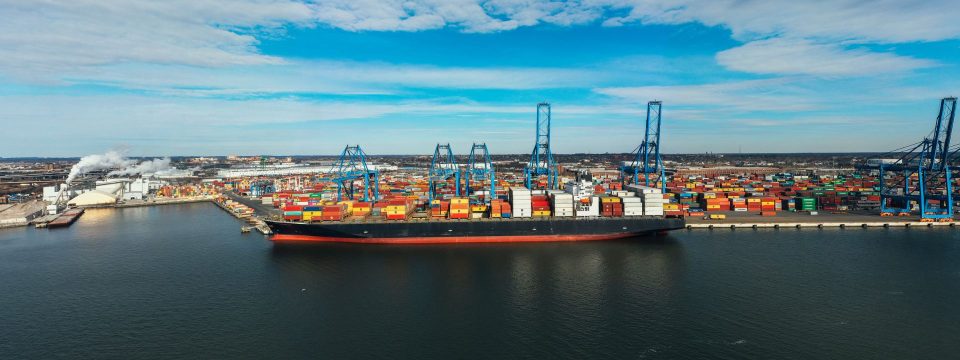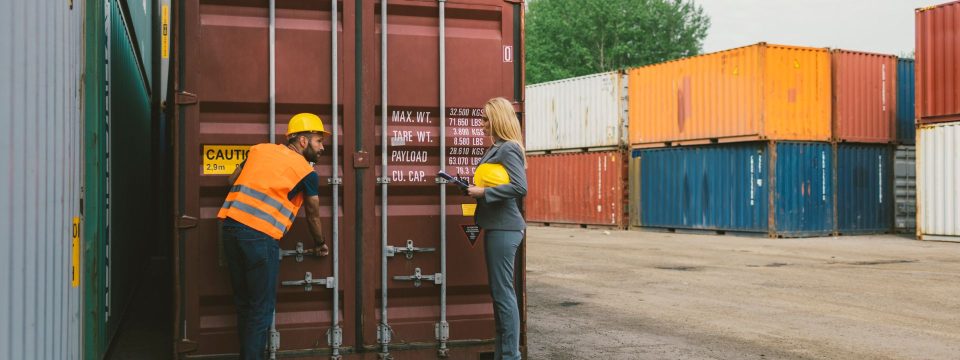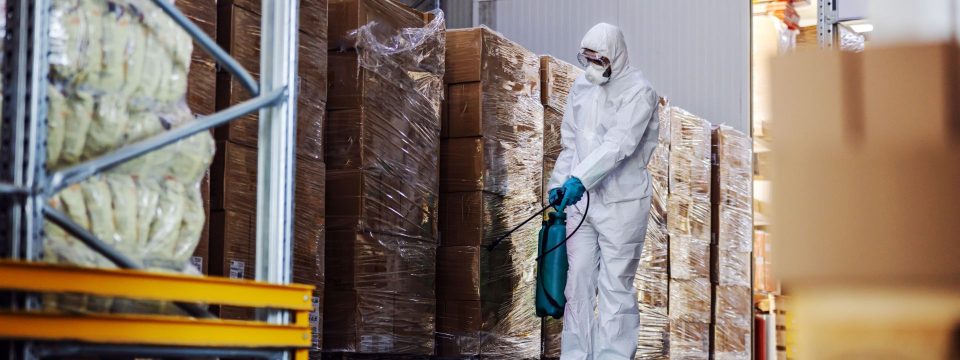From Australia’s Port to Your Warehouse: The Cargo Process Breakdown
October 28, 2022 Beginners Guides

With 98% of all Australian trade flowing through ports, you may be wondering exactly what the cargo process breakdown is from the moment cargo arrives in Australia to when it’s delivered to your warehouse. You may think it’s simply a matter of transporting your goods on a truck straight to your premises. But it’s not as straightforward as that.
Often when considering sea freight shipping schedules, you’ll be presented with an “estimated time of arrival” (ETA) at your local port. But this is completely different from when your cargo actually arrives at your warehouse doors. The ETA is an arrival date for the vessel (or, indeed, aircraft) to arrive at its destination. But there is a whole process to go through before you receive your cargo.
So below, we’ve broken down the entire cargo process – from when your goods arrive to the moment it reaches your warehouse for storage
What happens when your cargo arrives in Australia?
When your cargo arrives in an Australian port, it will be unloaded from the vessel or aircraft and processed through customs clearance before it is available for it to be picked up. Customs clearance generally takes approximately 24hrs to process, unless there are any holds placed by either the Australian Border Force, Department of Agriculture, or the Imported Foods Department . It is then typically picked up by truck or train, then it will make its way to the warehouse of your choosing.
Exactly what occurs throughout the process depends on what cargo you’re importing and how your cargo is packed (LCL vs FCL). The Incoterms in effect will also affect your risks throughout the whole procedure. There are issues to consider with customs clearance, the payment of duties and taxes and also what mode of transport your goods will be delivered by. We’ll discuss more of this below.
But the most fundamental thing you need to be aware of is that the time it takes for your goods to reach your warehouse will largely depend on whether it is packed FCL or LCL.
When cargo is shipped LCL (5-7 day process)
If your cargo is transported in a Less than Container Load (LCL) shipment, it will take between 5 to 7 days for your goods to get to you. It’s the longer process because your goods are consolidated in a container with other cargo. In other words, your goods are mixed with other people’s goods.
When the vessel or aircraft arrives, the container will be unloaded and taken to what’s called a bonded facility or a ‘bonded warehouse’ where deconsolidation (i.e. the unpacking of your goods) will occur. Once the deconsolidation is complete, and cargo is customs cleared, it will then be “out-turned” (i.e. discharged).
At this stage, a transport company can then go to the unpack depot, pick up your cargo and attend to delivery.
Unlike FCL cargo, which is collected from the wharf, time slots for collection are not provided for LCL shipments. Instead, you will have to wait in a queue to collect cargo once it has become available.
When cargo is shipped FCL (2-3 day process)
When cargo is transported in a Full Container Load (FCL) shipment, you will have your own container (and it won’t be shared with anybody else). This is a quicker process, allowing you to get your cargo from port to warehouse in 2 to 3 days.
However, your cargo will only be collected once a time slot has been made available by the terminal operator. Different terminal operators have different rules for producing slots for collection:
- DP World – containers will need to be discharged from the vessel and on the ground before the slots become available on a slotting system online. Once slots are released, the transport company can then book a slot to pick up your cargo.
- Patricks – if Patricks advertise that a slot has become available, you can book a slot even if the container has not grounded. This allows for better planning.
For both FCL and LCL shipments
There are important events that occur on the journey from a container port to your warehouse, regardless of whether the cargo is shipped FCL or LCL.
A failure to properly carry out the steps required may result in your goods being detained or re-exported, with potential extra costs charged. We’ve outlined some of these steps below.
Goods need to be customs cleared to arrange collection
Your goods will need to be processed through customs. This is a complicated procedure and involves many government agencies, including the Australian Border Force and the Department of Agriculture, Water and the Environment (DAWE). DAWE was formerly known as the Australian Quarantine and Inspection Service (AQIS).
This means you should provide all shipping documentation well in advance of arrival. This will include your commercial invoices, packing lists, certificates of origin and other import declarations that may be applicable. You also may need to pay the relevant Import Processing Charge. If goods are held in customs, you must wait until the relevant authorities have checked the documentation or inspected the goods before cargo can become available. DAWE may also direct your shipment for a biosecurity inspection (sometimes referred to as a quarantine inspection), in which case you will need to pay for the inspection.
Duties and GST need to be paid
Customs will not release cargo unless all payments relating to duties and GST have settled. You should have funds available in advance of cargo arrival to prevent holdups.
The customs duty you need to pay will depend on the particular customs tariff that applies. As a general rule, however, importers in Australia will be charged a 5% rate of the FOB Value for customs duties. The “FOB” value is the cost of your goods excluding overseas transport and insurance. Ensure you are aware of the relevant HS Code that applies to your particular cargo, so customs is able to accurately calculate how much customs duty you are liable to pay.
You will also need to pay Goods and Services Tax (GST) of 10% of the CIF plus Duty value. However, you may be able to get this cost deferred through the government’s deferred goods and services tax (DGST) scheme.
Transport must be arranged
To best facilitate thedelivery of your goods from port to warehouse, you should know in advance what sort of vehicles are most suitable for your circumstances.
For LCL – Pricing is normally based on the receiving party having their own equipment (such as a forklift) to offload cargo at the delivery point. If you do not have any equipment, you may need to request a tail-lift delivery where goods are dropped on the ground.
For FCL – Do you need a sideloader for containers to be dropped on the ground? Do you have a loading bay? Do you need the container unpacked and the cargo delivered loose? Knowing the answers to these questions will help facilitate successful delivery.
Remember the Incoterms
Your shipment will typically be regulated by one of the International Commercial Terms (Incoterms). Precisely which party bears the costs, risks and insurance when transporting the cargo from port to warehouse will be based on the Incoterm your transaction is governed by.
For example, if your shipment is governed by ex works (EXW), the buyer of the goods will bear all costs and risks on the journey from the supplier at origin to the final delivery point.
By contrast, if your cargo is shipped delivered and duty paid (DDP), that means the seller must bear the costs and risks of delivering the cargo to the final delivery point at destination and pay all associated taxes.
Incoterms® 2020 chart
Professional freight forwarders can help get your cargo to the warehouse safely
The process of transporting cargo from an airport or seaport to your end destination can be complicated, and it is very easy to get mixed up in the mess. Even the slightest detail missed can lead to an extra charge, wasted time or even your goods being seized and sent back to its point of origin.
Our professional freight forwarders and customs clearance experts across Australia can help facilitate the entire process. From cross-checking every document and ensuring you pay the correct customs duty to arranging the right transport available, ICE can help you every step of the way.
Get in touch with a specialist at one of our offices today
Request A Quoteor call us on 1300 227 461

We Consult. We Plan. We Deliver.
- CONSULT – We discuss your specific needs.
- PLAN – We develop a bespoke tailored plan that is cost-effective & efficient.
- DELIVER – We manage your shipment and keep you updated from beginning to end.


